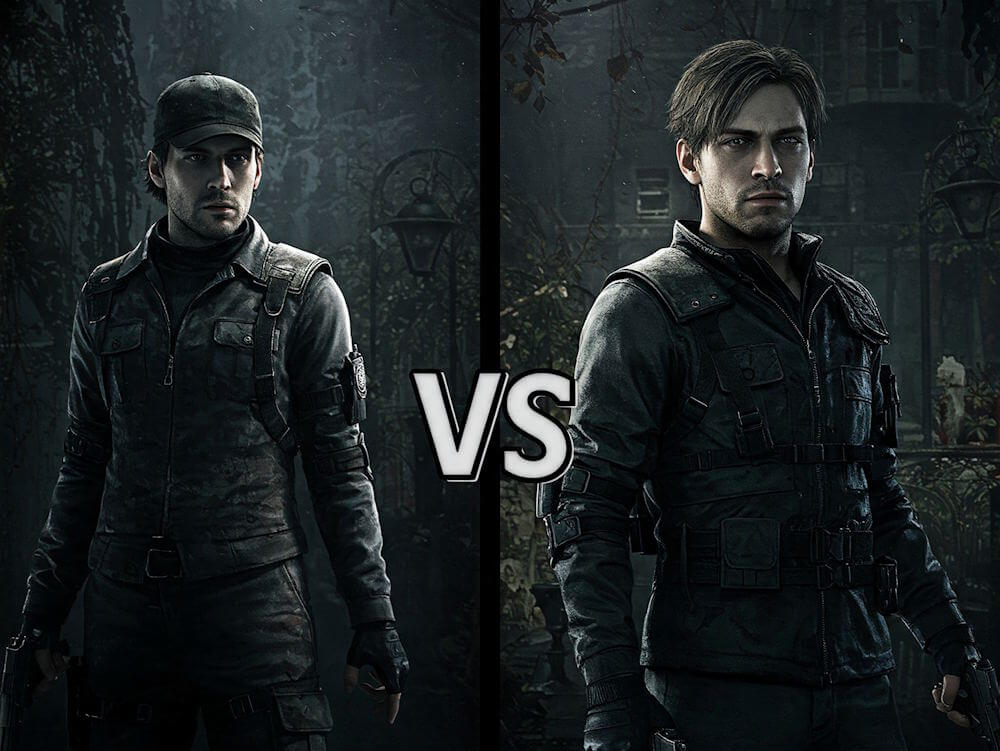Xenoblade Chronicles 3, released on July 29, 2022, marks a significant entry in the acclaimed Xenoblade series developed by Monolith Soft. Available exclusively for the Nintendo Switch, this title brings together elements from previous installments while introducing a wealth of fresh gameplay mechanics and narrative depth that aim to elevate the JRPG genre. As the third major installment, it follows the narrative threads and expansive worlds laid out in its predecessors, Xenoblade Chronicles and Xenoblade Chronicles 2, while maintaining a unique identity.
This latest installment embarks on a new adventure that intertwines the fates of two rival nations, Keves and Agnus, in a rich and vibrant world teeming with exploration opportunities, deep character development, and socially impactful themes. The game has garnered critical acclaim since its release, appreciated for its innovative combat system and engaging storytelling, which resonates with both series veterans and newcomers. By incorporating features such as interlinking character classes and dynamic combat strategies, Xenoblade Chronicles 3 pushes the boundaries of traditional JRPG mechanics.
A noteworthy aspect of Xenoblade Chronicles 3 is its ability to meld emotional storytelling with expansive open-world exploration. The game has not only successfully advanced the narrative arc established in its earlier iterations but also introduced a new cast of characters that players can connect with. These elements contribute to its vital position within the Xenoblade chronology, as the title strives to evolve the genre while adhering to the core experience that fans have come to cherish.
In a landscape where JRPGs continually evolve, Xenoblade Chronicles 3 stands as a symbol of innovation and tradition, paving the way for future titles in the series and contributing to the ongoing dialogue within the genre.
The Evolution of JRPGs: A Brief History
Japanese Role-Playing Games (JRPGs) have come a long way since their inception in the late 1980s. The genre’s roots can be traced back to early computer games, drawing inspiration from western RPGs, particularly Dungeons & Dragons. Notable titles such as “Dragon Quest” released in 1986 marked the beginning of the Japanese phenomenon, introducing turn-based battles, a structured narrative, and character progression systems that would become hallmarks of the medium.
Throughout the 1990s, the genre experienced significant advancements in technology, contributing to its evolution. The introduction of 16-bit consoles allowed for intricate storytelling, with “Final Fantasy VI” setting a new standard for narrative depth and character development. This period also saw the emergence of iconic franchises such as “Chrono Trigger,” which showcased time travel mechanics and multiple endings, appealing to a range of players. The transition to 3D graphics in the late 1990s, epitomized by “Final Fantasy VII,” further transformed the landscape, providing players with more immersive environments and cinematic experiences.
The early 2000s marked the rise of action-oriented JRPGs, with titles like “Kingdom Hearts” blending real-time combat with traditional RPG elements, appealing to a broader audience. Alongside this, developers explored new storytelling techniques, emphasizing emotional character arcs and complex moral dilemmas. As technology continued to evolve, so did the scope of JRPGs, leading to vast open-world environments in games such as “Xenoblade Chronicles.” These advancements not only expanded gameplay but also encouraged experimentation within the genre.
As we entered the 2010s and beyond, JRPGs began to incorporate online elements, allowing for multiplayer experiences and expansive, connected worlds. The genre has adapted to modern gaming trends while retaining its core identity, paving the way for innovative titles like “Xenoblade Chronicles 3.” This evolution highlights the resilience of JRPGs and their capacity to engage new generations of players, showcasing a blend of nostalgia and futuristic gaming experiences.
Key Features of Xenoblade Chronicles 3
Xenoblade Chronicles 3 showcases an impressive evolution in JRPG mechanics, evident through its distinctive gameplay features. The combat system has undergone significant enhancements, allowing players to experience a fluid and dynamic battle environment. The inclusion of a class system introduces strategic depth by enabling characters to specialize in various roles, such as attackers, defenders, and healers. This diversification not only broadens the tactical possibilities during combat but also encourages players to experiment with combinations of classes to optimize their party’s effectiveness. The real-time battle mechanics, combined with an innovative auto-attack feature, ensure that each encounter is engaging, stimulating players to adapt their strategies on the fly.
World-building in Xenoblade Chronicles 3 is another standout characteristic that contributes to its appeal. The vast landscapes are meticulously crafted, providing players with an immersive experience that invites exploration. The environments range from lush forests to arid deserts, each filled with unique flora and fauna. Attention to detail is paramount, as the world presents numerous hidden secrets and treasures, rewarding players who invest time in exploration. Furthermore, each region is interspersed with lore and history, enhancing the narrative experience while fostering a sense of continuity within the game world.
Character development in Xenoblade Chronicles 3 is intricately linked to the overarching story, allowing for growth that feels organic and impactful. Players form bonds with characters through various interactions, which in turn affects their abilities and narratives. This connection is complemented by engaging quest design; missions are not merely objectives but also rich narratives that deepen player investment in the characters and their journeys. Each quest seamlessly integrates into the larger narrative framework, encouraging players to engage with the world around them while unfolding the complex story of Xenoblade Chronicles 3. Overall, these features exemplify how the series continues to push the boundaries of the JRPG genre.
Character Design and Development
The character design and development in Xenoblade Chronicles 3 represents a significant evolution within the realm of Japanese Role-Playing Games (JRPGs). In this installment, characters are not merely archetypal heroes or villains; they are complex individuals, each with distinct backgrounds, motivations, and growth arcs that enhance the overall narrative experience. This depth allows players to form emotional connections, a trait that is essential for an immersive gaming experience.
One of the standout features of Xenoblade Chronicles 3 is its emphasis on character development through relationships and conflicts. Unlike earlier JRPGs where character progression often followed a more rigid path, the characters in this title experience substantial growth influenced by their interactions with one another. This nuanced approach to character design not only enhances the storytelling but also mirrors real-life complexities of relationships, allowing players to empathize with the characters on a more profound level.
When comparing the characters from Xenoblade Chronicles 3 to those in earlier JRPGs, such as those from the Final Fantasy series, it becomes evident how far character design has evolved. Earlier games often relied on linear character traits that dictated player expectations. In contrast, the characters in Xenoblade Chronicles 3 display multifaceted personalities, capable of change and adaptation as the story unfolds. This shift reflects a growing understanding within game development of the importance of character arcs, making them pivotal to engaging storytelling.
The exploration of themes such as unity, conflict, and personal growth in character development showcases the strides made in JRPG design. This evolution not only engenders a richer narrative experience but also sets a new standard for future titles within the genre, underscoring the lasting impact of enhanced character design in video gaming.
World-Building and Exploration
The world of Xenoblade Chronicles 3 presents players with an expansive and intricately designed environment, a hallmark of the series that showcases significant advancements in the realm of JRPGs. The game sets itself apart through its rich lore and imaginative landscapes, which foster both exploration and narrative immersion. Each region is meticulously crafted, revealing a diverse array of biomes ranging from lush forests to desolate wastelands, each filled with unique flora and fauna that react to the players’ interactions, thus enhancing the realism of the game world.
In comparison to its predecessors, Xenoblade Chronicles 3 elevates world-building to new heights by cultivating a sense of scale and depth. While earlier JRPGs often relied on more linear paths and confined spaces, this installment encourages players to traverse vast open areas teeming with secrets and hidden quests. The dynamic weather systems and day-night cycles imbue the environments with life, creating a vibrant world that feels responsive to players’ actions. Old JRPGs, while innovative for their time, often presented static worlds, whereas the living ecosystem in this title invites exploration and diving deeper into the lore.
Moreover, the game’s narrative intricacies are woven into its vast world, making exploration not just a mechanical task but also a narrative endeavor. Players uncover lore by interacting with the environment and NPCs, unraveling stories that highlight the history and culture of the various factions within the game. This deep interconnection between exploration and storytelling allows players to inhabit the world of Xenoblade Chronicles 3 on a profound level. Ultimately, this game exemplifies the evolution of JRPGs, marking a turn toward more immersive and engaging gaming experiences that prioritize player agency and environmental storytelling.
Narrative and Themes in Xenoblade Chronicles 3
Xenoblade Chronicles 3 continues to exemplify the evolution of narrative structures and thematic elements within the realm of JRPGs. This installment presents a mature storyline that delves into the complexities of conflict, identity, and the quest for meaning in an increasingly fragmented world. The narrative centers around the intertwining fates of characters from opposing factions, highlighting the moral ambiguities of warfare. The blend of personal and collective narratives adds depth, prompting players to engage with the characters on an emotionally resonant level.
Thematic complexity is a hallmark of Xenoblade Chronicles 3, as it thoughtfully explores concepts of friendship, sacrifice, and the essence of humanity. The game poses challenging questions about free will and destiny, pushing players to reflect on their own choices within the gameplay. Values such as empathy and understanding are woven throughout the story, contrasting with the more traditional, often black-and-white narratives seen in earlier entries of the series. This nuanced approach helps to elevate the storyline, inviting deeper discussions about the characters’ motivations and the societal structures they navigate.
Furthermore, the integration of diverse character arcs not only enriches the storyline but also enhances the gameplay experience. Players are encouraged to invest in the lives of various characters, revealing interconnected backstories that forge a cohesive narrative tapestry. This interconnectedness serves to illuminate the broader themes of reconciliation and unity, as the protagonist and their companions learn to bridge divides. In comparison to previous JRPGs, which may have adhered to more linear storytelling techniques, Xenoblade Chronicles 3 takes bold strides towards a more intricate and engaging narrative, serving as a testament to the evolving landscape of the genre.
Technological Innovations and Graphics
The launch of Xenoblade Chronicles 3 marks a significant leap in technological advancements within the realm of JRPGs. The game’s graphics are a testament to the progress made in both hardware capabilities and software development. Utilizing the power of the Nintendo Switch, the developers have crafted expansive and beautifully detailed environments that enhance player immersion. The lush landscapes, intricate character designs, and dynamic weather effects contribute to an experience that feels vibrant and alive, far surpassing the visual fidelity of earlier entries in the genre.
Moreover, the graphical fidelity is complemented by advancements in sound design. The audio in Xenoblade Chronicles 3 provides a rich tapestry of music and sound effects that elevate the emotional depth of the narrative. The orchestral score dynamically interacts with gameplay, responding to players’ actions and significant moments, thus reinforcing the impact of story-driven sequences. The use of spatial audio technology further immerses players, allowing for a more nuanced auditory experience that can affect gameplay, especially during exploration and combat.
Overall presentation in Xenoblade Chronicles 3 has also seen a notable upgrade. The interface design prioritizes player engagement and clarity, featuring streamlined menus and intuitive controls. This modernization of user experience allows players to focus on the expansive world-building without being hindered by cumbersome systems typical of older RPGs. As a result, the technological innovations within Xenoblade Chronicles 3 not only enrich the visual storytelling but also enhance the overall gameplay experience, setting a new benchmark for the genre.
Community and Reception
The launch of Xenoblade Chronicles 3 has sparked considerable discussion within the gaming community, showcasing the evolving landscape of the JRPG genre. Players and critics alike have responded to the game, focusing on various elements that highlight its innovative approach and narrative depth. Initial reviews have generally leaned towards the positive, with many praising the game’s character development, intricate storytelling, and expansive world design. These attributes have been noted as vital aspects that solidify the game’s place in the series and the genre as a whole.
Critical reception has recognized Xenoblade Chronicles 3 for successfully integrating new gameplay mechanics while adhering to the traditional elements beloved by long-time fans of JRPGs. The art style and musical score also received acclaim, contributing significantly to the immersive experience. Reviewers emphasized how the game builds upon its predecessors, enhancing combat systems and branching narrative paths that keep players engaged. Consequently, this evolution suggests a progressive direction within the genre, attracting both seasoned players and newcomers.
Player feedback has corroborated many of the critical points highlighted by reviewers. Community forums and social media discussions overflow with enthusiasm surrounding the game’s innovations, with players sharing strategies and experiences. Users have particularly noted the compelling set of characters and the multifaceted interactions they have. This reflects a trend in contemporary JRPGs toward deeper emotional connections between players and characters, something that was particularly evident in Xenoblade Chronicles 3.
Overall, the community’s response and the critical acclaim demonstrate that Xenoblade Chronicles 3 is not merely a continuation of a beloved franchise; it signifies an important step in the ongoing evolution of JRPGs, blending tradition with fresh ideas that resonate with a diverse gaming audience.
Conclusion: The Future of JRPGs After Xenoblade Chronicles 3
The release of Xenoblade Chronicles 3 represents a significant milestone in the evolution of Japanese Role-Playing Games (JRPGs). This installment not only expands upon the rich lore and intricate gameplay mechanics established by its predecessors but also introduces innovative features that redefine player interaction and narrative depth within the genre. The complex interweaving of character development and environmental storytelling in Xenoblade Chronicles 3 sets a high standard for future JRPGs, suggesting a paradigm shift toward more immersive experiences.
As we look ahead, it is likely that the impact of Xenoblade Chronicles 3 will inspire a new wave of creativity. Game developers may embrace the more expansive open-world designs and dynamic combat systems showcased in this title, leading to the emergence of JRPGs that prioritize player agency and freedom of exploration. Furthermore, the successful integration of diverse narrative threads and character arcs can serve as a blueprint for future storytelling within the genre, encouraging developers to experiment with non-linear approaches that allow players to shape their own stories.
Moreover, the emphasis on community and online interaction evident in Xenoblade Chronicles 3 may pave the way for enhanced multiplayer experiences in JRPGs. The growing popularity of social gaming can encourage developers to incorporate cooperative or competitive elements that deepen connections among players, thus refreshing the traditional single-player focus of the genre.
In conclusion, the legacy of Xenoblade Chronicles 3 is poised to resonate throughout the future of JRPGs. Its contributions not only highlight the potential for innovative gameplay and rich storytelling but also signal a willingness within the industry to embrace evolution. As future titles emerge, they will undoubtedly draw inspiration from the successes of this landmark game, leading to a vibrant and diverse landscape for JRPG enthusiasts.



